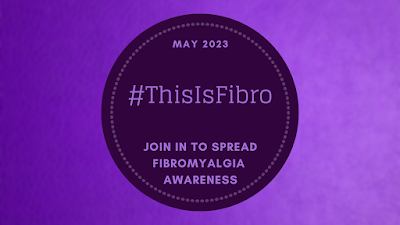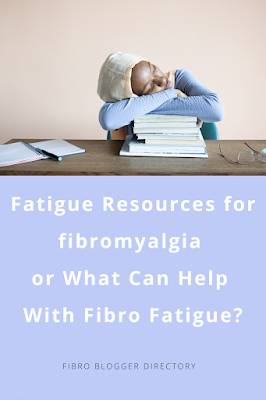International Boost Your Self-Esteem Month is held every February. In celebration of self-care and self-esteem, especially because of its importance to people with chronic illness, I have put together a collection of comments about this topic from people living with fibromyalgia. These people, have struggled with the issues of self-acceptance, self-compassion, doubt, and confidence on a daily basis because of a diagnosis. They have realized how important self-care is for just getting through the day when living with chronic pain and other ongoing issues. The quotes here are all from our wonderful fibro bloggers and you can find out more about them at their blogs by clicking the highlighted links provided.
WHAT IS SELF-ESTEEM? Self-esteem is an evaluation of your own self-worth, essentially the opinion we have of ourselves. Boosting your self-esteem – especially when you have been used to feeling/thinking something for a long time – is a working progress. It takes time, patience, and a lot of kindness to yourself... Sarah at Me, Myself and Chronic Illness Blog.

When your life has been turned upside down by fibromyalgia, and everything you once were able to do is a distant memory, your self-esteem can take a nose-dive. I was here just a few years ago. I had no idea where the old me had gone, and I did not like the new me. Firstly, where was the time for self-care, when I was barely coping with fibro, and raising six children alone. Secondly, with my self-worth at rock-bottom, I wasn't interested in self-care. Here's what I have learned. Self-worth and self-esteem need to be disconnected to what you can get done in a day and connected to the kind, caring, loving person you are, your character. Once you learn to love yourself no matter where you are right now in life, you have a strong motivation for self-care, which makes all the difference to your quality of life with fibromyalgia. - Lynne at The Healing Within Fibromyalgia.
Being forced into an early retirement from a career I never thought would end, with the added bonus of being diagnosed with a condition that would affect my life, tore my world in two and I found myself in one of the darkest periods of my life. James talks about his self-esteem hitting rock bottom and then all the things he did to learn the skills of how to live with a long-term health condition. You can read his story at Fibro Ramblings. Katie at PainFULLY Living talks about some of the things we go through when coming to grips with fibromyalgia. I realize that I am ashamed of myself when I’m not healthy. I feel like I’m not doing all that I should to be well. I’m not good enough to figure this out. Her article about shame and acceptance talks about choosing to respond to these times with self-acceptance and self-love. Social stigma is based on ignorance and fear. Self-stigma occurs when you agree with and internalize social stereotypes. Both can lead to social isolation and depression. Remind yourself, you are not your illness, no matter what anyone else may say, think or feel. You have no reason to be blamed or feel ashamed. - Sue at Fibro Daze
I’ve come to value growing as a person as one of my most important accomplishments, instead of getting promotions, keeping up with the Joneses, or any of the other markers we are taught to measure our success by. Without fibro, I would have let external factors determine my self-worth. It’s not that I’m grateful for fibromyalgia, or that I’m glad I have it, but I have found a way to make meaning out of it, and find a silver lining. I’m developing as I go; it’s a work in progress, but a worthwhile one. - Katarina at Skillfully Well and Painfully Aware
Compassion Therapy is an evidence-based form of psychotherapy that draws upon our capacity for compassion to reduce intrusive feelings of shame and self-criticism. It was developed by Dr. Paul Gilbert, a psychologist from England, and uses meditation exercises focusing on understanding the universality of suffering, gaining an emotional connection with other people's suffering, and the motivation to act to lessen suffering. - Find out how it can specifically help fibromyalgia here. If healing is a return to wholeness, then loss of good health is the ultimate fragmentation of the self; a state, made manifest, of something much deeper occurring on the inside...
The very pattern of Fibromyalgia lends itself beautifully to developing an attitude of gratitude; the repeated lows and the crashes making the days when you feel great, or even just a little better than you did, enabling you to appreciate the inherent joy to be found in even the simplest of things. From Fibromyalgia – the fragmented self by Helen at Living Whole. SELF-CARE: I know, self-care, self-care, self-care. I think just about everybody is “self-cared” out right about now because we all write about it so much. But you know why we do write about it? That is because it is one of the things that we absolutely and positively need... Jennifer at Positivity In Pain.
A wish for you: A good cup of worthiness, affection, trust and love for yourself, no matter the roads in which you choose to follow. An acceptance that allows you to forgive the multitude of 3am anxiety attacks that see you in tears on the bedroom floor or the number of times you have beaten yourself up for being sick, unreliable, disappointing, boring, a burden and most importantly an overall ‘drain’ on the multidisciplinary healthcare system. - Sharna at Fibro Files
Self-care is so important whether you have a chronic illness or not. Make sure to put your health first as often as possible to have your best life. - Mel at Looking For The Light shares her own nightly self-care routine here.
Donna at Fed Up with Fatigue explains how she was bad at self-care, drove herself too hard with the A-type personality that many people with fibromyalgia seem to have had and what she does now to provide herself with the self-care that she needs on a daily basis.
Why are we so afraid to let go of things in our lives that cause us stress? Why does it take so long? Why are we afraid to practice self-care?
For me, I can say without doubt that my drive to succeed came at a great personal cost to my health and soul.
I struggled to figure out which parts of my life were causing the most stress. I told myself over and over I couldn’t keep juggling all those balls in the air anymore. There was no time to run my own business, continue with my volunteer work, keep up with my health (29 visits to the hospital in 2017 and 32 in 2018) and keep my relationship with my husband going.
We chose to remove it all and decided to focus on us.
I cleared out the parts of my life in my home that were gone years ago.
Anything that caused me stress, anything that did not bring me joy, anything that caused me to exert energy all went out the door, room by room, item by item, with many tears and silent reminders to look forward to tomorrow and not think about the past or the future. From Carrie at My Several Worlds where she also shares 8 tips for letting go and clearing out things that do not contribute to self-care.
If you’ve read my blog for any amount of time, you will know that meditation saved my life. I do it every single day, and if I must miss a day it’s very rare. It gives me deep rest my body doesn’t even achieve during sleep. It tops up my energy levels for the afternoon. It calms my central nervous system. It is just for me. 15-30 minutes of pure self-care. - Melissa, from Melissa VS Fibromyalgia
Rachel, at Once Upon A Fog Blog, practices self-care by living her life with creativity, laughter and happiness. She is a graphic designer, who believes in the power of laughter and positivity so much that she runs a Facebook group for The Happiest Place on Earth!
Suzanne at Coco Lime Fitness suggests a Digital Detox, low-impact exercise, and eating an anti-inflammatory diet to help us stress less. It is also very important not to be overly stressed about eating perfectly because the stress in and of itself can make fatigue and pain worse.
Jennifer at Positivity in Pain talks about self-care and her tips which include a grounding technique, the importance of laughter, getting outdoors, and getting help. I implore you to find a therapist, one that is a good fit for you. Whether it is in-person or telehealth, having someone to talk to can make all of the difference in the world. Not only that, they can teach us coping skills for times when we need them the most.
PRACTICAL SUGGESTIONS FOR SELF CARE
25 ideas for things we could do in 10 minutes to make us feel good.
Nighttime self-care routine
Digital Detox
Yoga Nidra for Fibromyalgia
Low Impact exercises for fibromyalgia with a fitness instructor.
Mindfulness for the Daily Life Challenge
Connect with others at Fibro Connect
Boost your self-esteem with a new skill: 12 suggestions for people with chronic pain.
Practical ways to boost your self-esteem including refusing harmful or inaccurate thinking.
Building the Compassionate self: audio
Psychological therapies like counseling or cognitive-behavioral therapy (CBT) can help.
Coaching.
Dimensions of Wellness - look beyond physical wellness at the other 7 areas we can get some balance in.
Prayer
Self-care during a flare
8 tips for letting go and clearing out things that do not contribute to self-care
Anti-inflammatory Diet
Now it's your turn to tell us what things have helped your self-esteem and what you have tried for self-care. We'd love to hear from you in the comments below.

.png)
.png)
.png)






.png)











